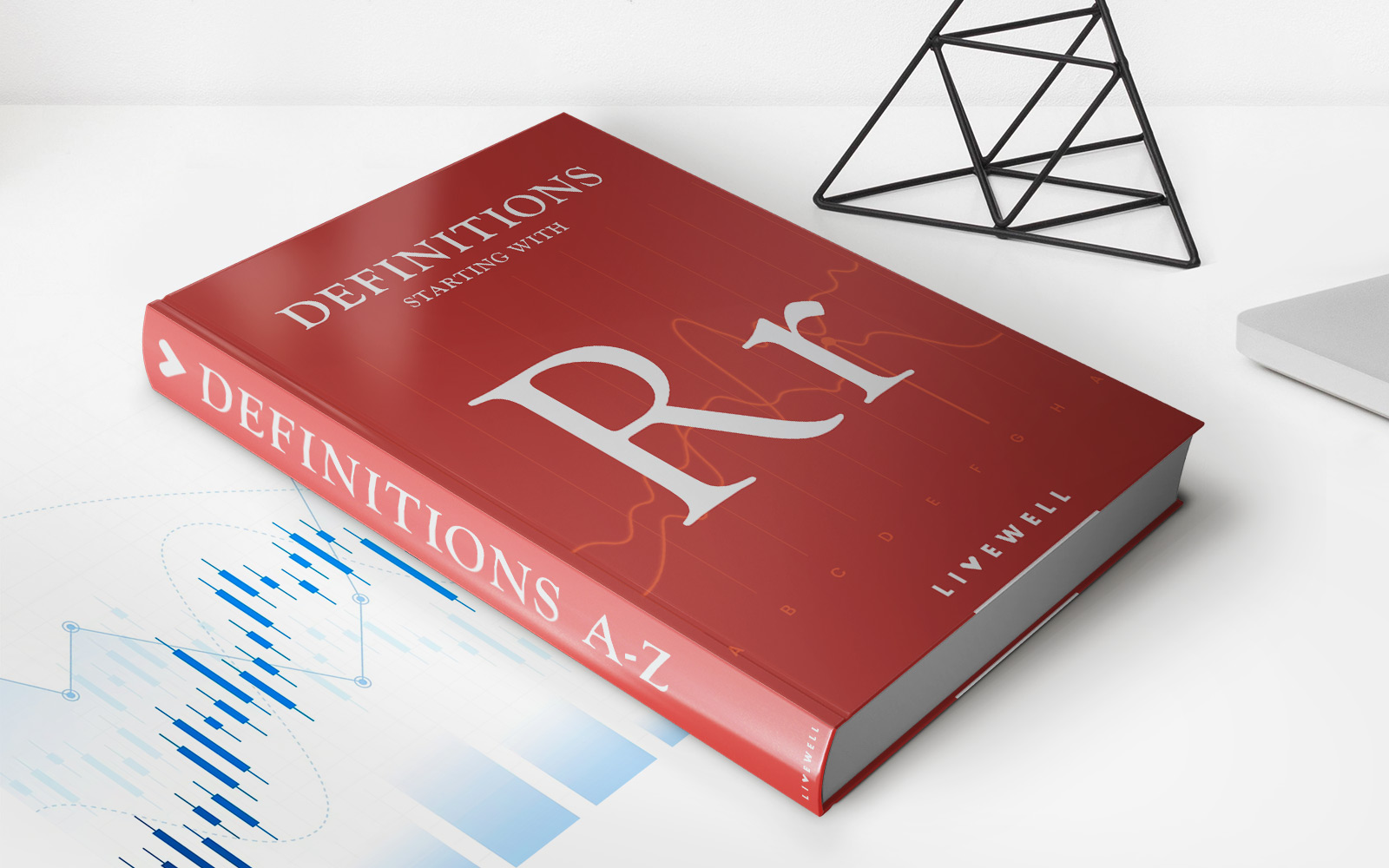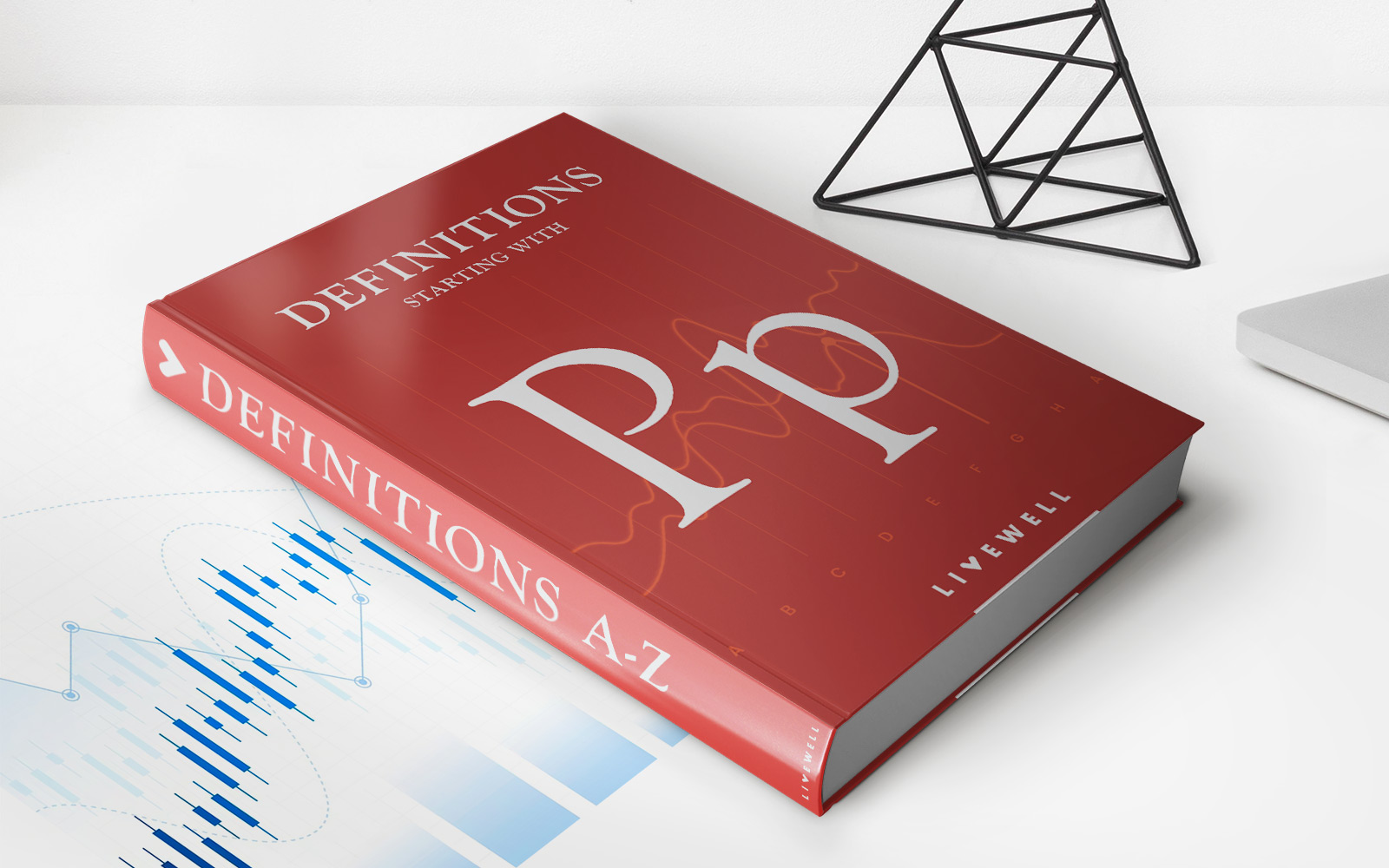

Finance
What Are Insurance Reserves?
Published: November 15, 2023
Learn about insurance reserves and their importance in finance. Discover how insurance companies set aside funds to cover potential claims and ensure financial stability.
(Many of the links in this article redirect to a specific reviewed product. Your purchase of these products through affiliate links helps to generate commission for LiveWell, at no extra cost. Learn more)
Table of Contents
- Introduction
- Definition of Insurance Reserves
- Types of Insurance Reserves
- Importance of Insurance Reserves
- Calculation of Insurance Reserves
- Factors Affecting Insurance Reserves
- Regulations and Standards for Insurance Reserves
- Challenges in Managing Insurance Reserves
- Examples of Insurance Reserve Utilization
- Conclusion
Introduction
Insurance is a vital part of the financial industry, providing individuals and businesses with protection against various risks and uncertainties. The insurance industry operates by collecting premiums from policyholders and using these funds to cover potential claims. However, to ensure the long-term stability and solvency of insurance companies, it is essential to establish reserves.
Insurance reserves play a crucial role in the financial management of insurance companies. They are a provision set aside to meet future claims or policy obligations. These reserves act as a safety net, ensuring that insurers have sufficient funds to settle claims and honor their policy commitments.
In this article, we will explore the concept of insurance reserves in depth, including their definition, types, importance, calculation methods, factors affecting reserves, regulations, challenges, and real-world examples of their utilization.
Understanding the concept and significance of insurance reserves is important for both insurance professionals and policyholders. Insurance reserves help maintain the stability and financial integrity of insurance companies, safeguarding the interests of policyholders and ensuring that claims can be paid out when needed.
So let’s delve into the world of insurance reserves and unravel their complexities to gain insight into this critical aspect of the insurance industry.
Definition of Insurance Reserves
In the insurance industry, insurance reserves refer to the funds set aside by insurance companies to fulfill their future responsibilities towards policyholders. These reserves are calculated to ensure that insurers have adequate funds to settle claims, pay out benefits, and meet other financial obligations.
Insurance reserves serve as a financial cushion for insurers, enabling them to manage their risks and maintain solvency. By setting aside reserves, insurers can effectively plan for potential liabilities, ensuring the availability of funds when claims or policy obligations arise.
These reserves are typically established through actuarial analysis and adhere to specific regulatory requirements and accounting standards. The amount of reserves is determined based on factors such as the type of insurance coverage, policy terms, historical claims experience, and expected future claims.
Insurance reserves are categorized into two broad types:
- Loss reserves: These reserves are specifically earmarked for expected claim payments. Loss reserves are set aside to cover outstanding claims that have been reported but not yet settled, as well as future claims that have not yet been reported. Insurance companies forecast potential losses based on historical data, industry trends, and other actuarial factors.
- Unearned premium reserves: Also known as premium reserves or premium liability reserves, these reserves are established for policies that have been issued but where the premium has been collected in advance. As the premiums are earned evenly over the policy period, insurers must set aside reserves for the portion of premium that has not yet been earned. This reserve acts as a liability on the insurer’s balance sheet, representing the unearned portion of premiums
Insurance reserves play a critical role in the financial management of insurance companies. They ensure the availability of funds to honor claims, fulfill policy obligations, and manage unforeseen contingencies. By maintaining an adequate level of reserves, insurers can instill confidence in policyholders, regulators, and stakeholders, contributing to the long-term stability of the insurance industry.
Types of Insurance Reserves
Insurance companies establish different types of reserves to cover various aspects of their business and to ensure the availability of funds for future obligations. Let’s explore some of the common types of insurance reserves:
- Loss Reserves: Loss reserves are funds set aside to cover expected claim payments. These reserves are critical in property and casualty insurance, where claims can take time to settle. Loss reserves include both reported and unreported claims. Reported claims are those that have been filed and are currently being evaluated or settled. Unreported claims are estimated based on historical data and actuarial models. Insurers regularly review and update loss reserves based on the latest information available.
- Unearned Premium Reserves: Unearned premium reserves (UPR) are funds reserved for policies where premiums have been collected in advance and the policy coverage extends beyond the accounting period. This reserve ensures that insurers have sufficient funds to meet potential claim liabilities for the unearned portion of premiums. As the policy period progresses, the unearned premium gradually transforms into earned premium.
- Expense Reserves: Insurance companies also set aside reserves for anticipated expenses, such as commissions, administrative costs, and claims handling expenses. These reserves are established to cover ongoing operational costs and are critical for maintaining the financial stability of the insurance company.
- Catastrophe Reserves: Catastrophe reserves are specific reserves held by property and casualty insurers to manage losses resulting from natural disasters or large-scale catastrophic events. These reserves are essential as they provide insurers with the necessary funds to handle an influx of claims following a major catastrophic event, such as a hurricane, earthquake, or wildfire.
- Reinsurance Reserves: Reinsurance plays a vital role in the insurance industry by enabling insurers to transfer a portion of their risk to other insurers or reinsurers. Reinsurance reserves are held to cover potential losses that may be reinsured. These reserves ensure that insurers have the necessary funds to settle claims for risks they have ceded to reinsurers.
The specific types and amounts of insurance reserves vary depending on the type of insurance coverage, the insurer’s risk appetite, regulatory requirements, and actuarial assessments. By establishing and maintaining these reserves, insurers can effectively manage risks, maintain solvency, and honor their commitments to policyholders.
Importance of Insurance Reserves
Insurance reserves play a vital role in the financial stability and long-term sustainability of insurance companies. Here are several key reasons why insurance reserves are important:
- Claims Payment: Insurance reserves ensure that insurers have sufficient funds to pay out claims to policyholders. By setting aside reserves specifically for expected claim payments, insurers can fulfill their obligations promptly and efficiently. This helps maintain trust and confidence among policyholders, ensuring that they receive the financial protection they depend on when they need it most.
- Financial Solvency: Adequate reserves are crucial for maintaining the financial solvency of insurance companies. Insurers must have enough funds to cover both expected and unforeseen liabilities. By establishing reserves, insurers can demonstrate their ability to meet their financial obligations and withstand unexpected events or market fluctuations. This is essential for ensuring the overall stability and credibility of the insurance industry.
- Risk Management: Insurance reserves are an integral part of risk management strategies. They allow insurers to assess and manage potential risks accurately. By setting aside funds for expected claim payments and future policy obligations, insurers can effectively analyze their exposure to risk and make informed decisions regarding pricing, underwriting, and capital allocation. Reserves act as a buffer, providing insurers with a financial cushion to manage uncertainties and unexpected events.
- Compliance and Regulation: Insurance reserves are subject to regulatory requirements and accounting standards. Regulators prescribe minimum reserve levels to ensure the financial stability and solvency of insurance companies. Compliance with these regulations helps protect policyholders’ interests and ensures a level playing field within the industry. Insurance reserves also contribute to transparency and accountability, as they provide regulators, auditors, and stakeholders with a clear picture of an insurer’s financial health.
- Business Continuity: Insurance reserves are crucial for ensuring the continuity of insurance operations. In the event of an unexpected increase in claims or a catastrophic event, insurers need to have sufficient reserves to handle the financial impact. Reserves provide a safety net, allowing insurers to continue their operations, fulfill policy obligations, and provide uninterrupted coverage to policyholders.
Overall, insurance reserves are a fundamental component of sound financial management in the insurance industry. By maintaining adequate reserves, insurers can mitigate risks, honor their commitments to policyholders, comply with regulatory requirements, and safeguard the stability and longevity of their business.
Calculation of Insurance Reserves
The calculation of insurance reserves involves a combination of actuarial analysis, historical data, industry standards, and regulatory requirements. The precise methodology for calculating reserves can vary depending on the type of insurance coverage and the specific circumstances of the insurer. Here are some common approaches used in the calculation of insurance reserves:
- Loss Reserves: For loss reserves, insurers typically employ actuarial techniques to estimate the ultimate cost of claims. This involves analyzing historical data, industry trends, and claim development patterns. Insurers consider factors such as claim frequency, severity, and the duration of the claims settlement process. Actuaries use statistical models and reserving methods, such as the chain-ladder method and loss development triangles, to project future claim payments and quantify the required reserves.
- Unearned Premium Reserves: Calculating unearned premium reserves involves determining the portion of the premium that has not yet been “earned” by the insurer. This calculation is typically based on the pro-rata method, where the unearned portion of the premium is determined by the percentage of the policy period remaining. For example, if a one-year policy has completed six months, the unearned premium would amount to 50% of the total premium collected.
- Expense Reserves: Expense reserves are established to cover anticipated expenses related to policy administration, claims handling, commissions, and other operational costs. Insurers analyze historical expense patterns, consider future projections, and apply industry benchmarks to calculate these reserves. Factors such as inflation, growth projections, and changes in business operations are also taken into account.
- Catastrophe Reserves: Catastrophe reserves are specific reserves held to manage large-scale losses arising from catastrophic events. Insurers may establish catastrophe models to estimate potential losses based on factors such as geographical exposure, historical loss data, and probability analysis. The calculation of catastrophe reserves involves considering the likelihood of occurrence and severity of potential events.
- Reinsurance Reserves: Calculating reinsurance reserves involves considering the portion of the insurer’s risk that has been transferred to a reinsurer. Insurers assess the reinsurance agreement terms, coverage limits, and pricing structures to determine the appropriate reserves. Factors such as the reinsurer’s financial strength, creditworthiness, and claims-paying ability are also taken into account.
It’s important to note that calculating insurance reserves is a complex and dynamic process. Insurers continuously monitor and review their reserves to ensure they remain adequate and reflect changing business dynamics and market conditions. Actuarial expertise and adherence to regulatory guidelines are essential for accurate and reliable reserve calculations.
Factors Affecting Insurance Reserves
Various factors can impact the calculation and adequacy of insurance reserves. Insurers need to consider these factors to ensure that their reserves accurately reflect their potential liabilities and financial obligations. Here are some key factors that can influence insurance reserves:
- Claims Frequency and Severity: The frequency and severity of claims play a significant role in determining the size of insurance reserves. Higher claim frequency or an increase in the severity of claims can result in larger reserve requirements. Insurers need to analyze historical claims data, industry trends, and market conditions to account for potential fluctuations in claim patterns.
- Policy Coverage and Limits: The extent of coverage provided by insurance policies influences the reserve calculations. Policies with higher coverage limits and broader scope may require larger reserves to account for potential claim payments. Insurers must evaluate the terms and conditions of policies and factor them into their reserve calculations.
- Economic Conditions: Economic factors, such as interest rates, inflation, and economic growth, can impact insurance reserves. For example, low-interest rates can affect the investment returns on reserves, potentially requiring insurers to hold larger reserves to mitigate investment risks. Similarly, inflationary pressures can impact claim amounts and increase reserve requirements.
- Regulatory Requirements: Insurance regulators impose minimum reserve levels to ensure the financial stability and solvency of insurance companies. Compliance with these regulatory requirements is essential. Insurers must stay updated with changes in regulations and adjust their reserve calculations accordingly to meet the prescribed standards.
- Underwriting and Pricing: The underwriting and pricing practices of insurers can impact the adequacy of insurance reserves. If insurers consistently underprice policies or exhibit inadequate underwriting practices, it can lead to larger and potentially insufficient reserves. Effective underwriting and risk assessment are crucial in accurately determining the required reserves.
- Reinsurance Arrangements: Reinsurance agreements impact the amount of risk retained by insurers and, consequently, the size of reserves. The terms, limits, and pricing of reinsurance contracts, as well as the financial strength of reinsurers, affect reserve calculations. Proper evaluation of reinsurance arrangements is essential to ensure the adequacy of reserves.
- Legal and Regulatory Changes: Changes in legal and regulatory frameworks, such as new legislation or court rulings, can impact insurers’ claim liabilities and reserve requirements. Insurers need to monitor and stay informed about such changes to accurately adjust their reserve calculations based on the evolving legal and regulatory landscape.
It is crucial for insurers to regularly evaluate and assess these factors to ensure the adequacy and accuracy of their insurance reserves. Proper consideration of these factors helps insurers effectively manage their risks, maintain financial stability, and meet their policyholder obligations.
Regulations and Standards for Insurance Reserves
Insurance reserves are subject to regulatory oversight and accounting standards to ensure the financial soundness and stability of insurance companies. Regulatory bodies and accounting organizations establish guidelines and requirements that insurers must adhere to when calculating and maintaining reserves. Here are some of the key regulations and standards for insurance reserves:
- Statutory Reserves: Insurance regulators in each jurisdiction set specific regulations governing the reserves insurers must maintain. These regulations vary by country and insurance sector. Statutory reserves are designed to ensure that insurers have sufficient funds to meet their obligations to policyholders.
- International Financial Reporting Standards (IFRS): Insurance companies following IFRS accounting standards must comply with the regulations set forth by the International Accounting Standards Board (IASB). IFRS 17, specifically, provides guidelines for insurance contracts, including the calculation and presentation of insurance reserves. Insurers must adhere to these standards when preparing their financial statements.
- Solvency II: Solvency II is a regulatory framework established by the European Union (EU) for insurance companies operating in EU member states. It sets out prudential requirements and standards for risk management, including the calculation and governance of insurance reserves. Solvency II aims to ensure that insurers have adequate capital and risk management practices in place to safeguard policyholders’ interests.
- Actuarial Standards of Practice: Actuarial organizations, such as the Society of Actuaries (SOA) and the Casualty Actuarial Society (CAS), establish professional standards and guidelines for actuaries involved in reserve calculations. These standards ensure consistency, professionalism, and accuracy in reserve estimation. Actuaries play a critical role in determining and evaluating insurance reserves, and their adherence to these standards is essential.
- Disclosure Requirements: Insurance regulators often mandate disclosure requirements related to insurance reserves. Insurers must provide transparent and comprehensive information about their reserve methodologies, assumptions, and the financial impact on their operations. This promotes transparency and enables policyholders, regulators, and other stakeholders to assess an insurer’s financial health.
Insurance companies must stay up to date with regulatory changes and standards to ensure compliance in their reserve calculations. Non-compliance with these regulations can lead to penalties, reputational damage, and potential financial instability.
Effective reserve management requires a combination of actuarial expertise, strong risk management practices, and adherence to regulatory requirements. By following these regulations and standards, insurers can maintain financial integrity, protect policyholders’ interests, and contribute to the stability of the insurance industry as a whole.
Challenges in Managing Insurance Reserves
Managing insurance reserves presents unique challenges for insurance companies. Effective reserve management is crucial for maintaining financial stability, meeting policyholder obligations, and complying with regulatory requirements. Here are some of the key challenges faced in managing insurance reserves:
- Uncertainty and Volatility: The insurance industry operates in a dynamic environment with evolving risks and uncertainties. Estimating future claim payments and liabilities can be challenging due to factors such as changing demographics, economic conditions, new technologies, and emerging risks. Insurers must continually assess and update their reserve calculations to account for these uncertainties.
- Data Availability and Quality: Accurate reserve calculations rely on the availability and quality of reliable data. Insurers may face challenges in obtaining comprehensive and timely data for analysis. Inconsistent data collection practices, limited historical data, and data gaps can impact the accuracy of reserve estimates. Insurers must invest in robust data management systems and processes to ensure the availability of high-quality data for reserve calculations.
- Complexity of Actuarial Analysis: Estimating insurance reserves involves sophisticated actuarial analysis and modeling. Actuarial calculations require a deep understanding of statistical techniques, mathematical models, and industry-specific dynamics. Shortages of skilled actuaries or challenges in keeping up with evolving actuarial practices can hinder accurate reserve calculations.
- Regulatory Compliance: Insurance companies must comply with regulatory requirements governing reserve levels and methodologies. These regulations may vary across jurisdictions, adding complexity to reserve management. Changes in regulations or the adoption of new accounting standards require insurers to adapt their reserve calculations accordingly. Staying updated and meeting regulatory compliance can be a significant challenge.
- Underwriting and Pricing Risks: Inadequate underwriting practices and pricing can lead to underestimation of potential liabilities and, consequently, insufficient reserves. Insurers need to carefully assess risks, conduct thorough underwriting processes, and ensure appropriate pricing to avoid reserve shortfalls.
- Investment Risks: Insurance companies typically invest their reserves to generate returns. However, investment risks, such as market volatility, interest rate fluctuations, and credit defaults, can impact the growth and stability of investment portfolios. Insurers must effectively manage investment risks to ensure the availability of sufficient funds to cover reserve obligations.
To overcome these challenges, insurers need to invest in advanced capabilities and technologies, enhance data analytics capabilities, maintain strong risk management practices, and foster a culture of continuous improvement. Collaboration between underwriters, actuaries, and investment professionals is essential to ensure accurate reserve calculations and effective reserve management.
By addressing these challenges and adopting best practices, insurance companies can enhance their reserve management capabilities, make informed financial decisions, and maintain the stability and financial integrity of their operations.
Examples of Insurance Reserve Utilization
Insurance reserves are established to fulfill future claims and policy obligations. When the time comes, insurance companies utilize these reserves to meet their financial responsibilities. Here are some examples of how insurance reserves are utilized:
- Claims Payment: The primary purpose of insurance reserves is to pay out claims to policyholders. When a valid claim is filed, insurance companies utilize reserves to settle the claim by disbursing the necessary funds. Whether it is a medical claim, property damage claim, or liability claim, reserves are tapped into to cover the costs associated with the claim.
- Policy Payouts and Benefits: Insurance reserves are also utilized for policy payouts and benefits. For example, in life insurance, when a policyholder passes away, the insurance company utilizes reserves to pay out the death benefit to the beneficiary listed in the policy. Similarly, in annuities or pension plans, reserves are utilized to make regular income payments to policyholders during their retirement.
- Catastrophe Coverage: In the event of a catastrophic event, such as a hurricane or earthquake, insurance companies are faced with a surge of large-scale claims. Insurance reserves designated for catastrophe coverage are utilized to handle these extraordinary claims and provide timely assistance to policyholders affected by the disaster.
- Reinsurance Claims: Insurance companies often transfer a portion of their risk to reinsurers through reinsurance agreements. When a claim is filed that falls under the reinsured risk, insurance companies utilize reserves to cover the claim payment. Depending on the type of reinsurance arrangement, the reinsurer may reimburse the insurance company for a portion of the claim amount.
- Insolvency or Run-Off: In unfortunate situations where an insurance company becomes insolvent or goes into run-off, insurance reserves are utilized to fulfill the remaining obligations to policyholders. The reserves are carefully managed and allocated to ensure fair and equitable settlement of open claims and outstanding policy obligations.
It’s important to note that insurance reserves are not just a fixed pool of funds that are always in use. Insurers constantly review and adjust their reserves based on changing circumstances, claims experience, and regulatory requirements. The utilization of reserves is a strategic process that insurance companies undertake to ensure that they have sufficient funds to meet their obligations and maintain financial stability.
By effectively utilizing insurance reserves, insurers can provide financial protection to policyholders, settle claims in a timely manner, and fulfill their policy obligations, strengthening trust and confidence in the insurance industry as a whole.
Conclusion
Insurance reserves are a critical aspect of the insurance industry, serving as a financial provision to meet future claims and policy obligations. These reserves play a fundamental role in maintaining the stability, solvency, and long-term sustainability of insurance companies. By setting aside funds for expected claim payments, unearned premiums, expenses, catastrophes, and reinsurance, insurers ensure that they have the necessary resources to fulfill their commitments to policyholders.
The calculation of insurance reserves involves actuarial analysis, historical data, and adherence to regulatory requirements and accounting standards. Insurers must carefully consider factors such as claims frequency and severity, policy coverage and limits, economic conditions, and regulatory compliance when determining the size and adequacy of reserves.
Effective management of insurance reserves is not without its challenges. Insurers need to overcome uncertainties, data limitations, actuarial complexities, and regulatory compliance hurdles. Additionally, they must navigate underwriting risks, investment risks, and the evolving dynamics of the insurance market.
However, by addressing these challenges, insurers can ensure accurate reserve calculations, meet their financial responsibilities, and maintain the trust of policyholders and stakeholders. Insurance reserves are utilized for various purposes, including claims payment, policy payouts and benefits, catastrophe coverage, reinsurance claims, and in situations of insolvency or run-off.
In conclusion, insurance reserves are a vital component of the insurance industry, safeguarding the interests of policyholders and ensuring the financial stability of insurers. By prudently managing these reserves and adhering to regulations and standards, insurers can confidently fulfill their obligations, navigate risks, and contribute to a robust and trustworthy insurance marketplace.














